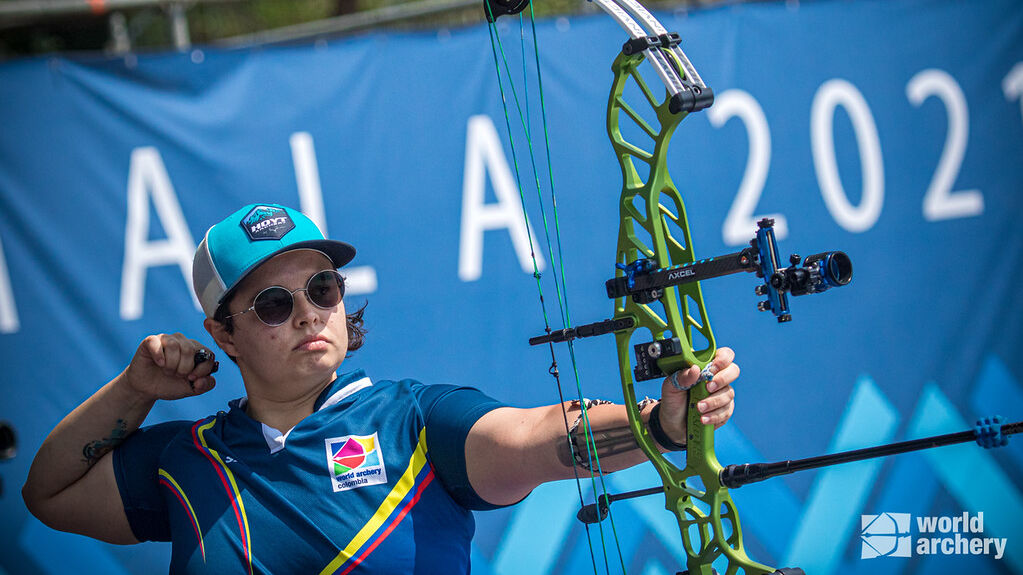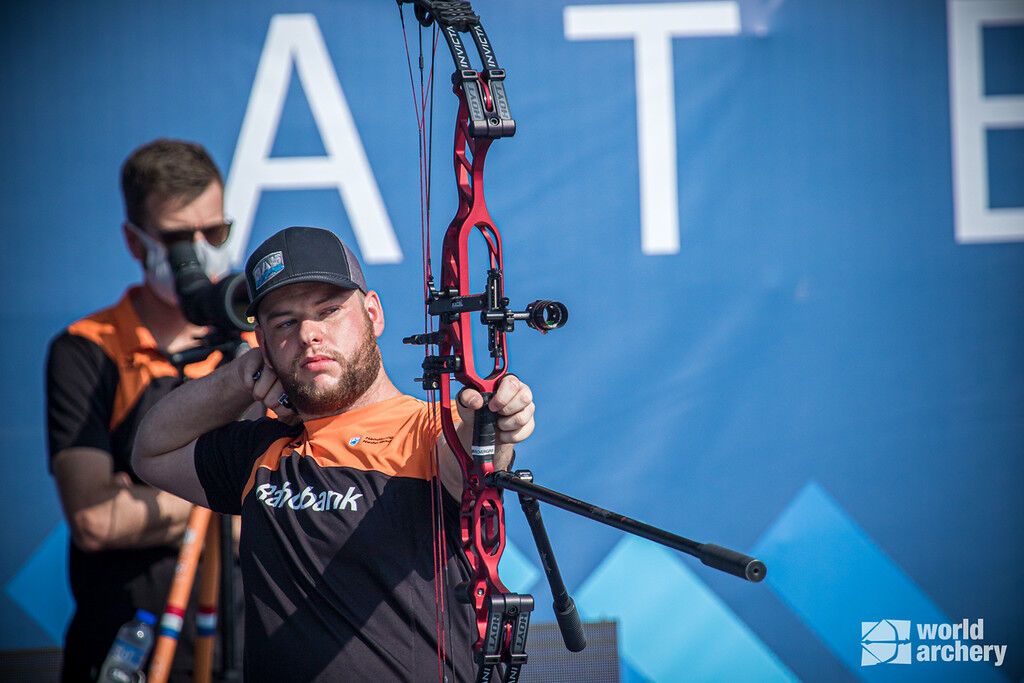Shoot-offs frequent in return to international competition

Nora Valdez resists the temptation to steal a glance during a tiebreak.
Watching her opponent shoot only serves as a distraction. Rather than observe the exact location in which the competing arrow lands, the Colombian archer prefers to clear her mind and focus her attention away from the match.
Like thinking about her family squirming in their chairs as they watch back home.
“Every time during these matches, they say, ‘oh, you’re going to kill me’,” says Valdez. “Why do you have to leave it that way? Why can’t you just finish with a 10 earlier?’”
The 23-year-old who her first-career stage of the Hyundai Archery World Cup in dramatic fashion in Guatemala City last month.
“I know they get so much anxiety and emotions when watching me,” she continues. “I thought, let’s give them a good match and keep it interesting.”
There was no shortage of excitement on the way to gold in Guatemala.
Nora booked her spot in the compound women’s final four as the surprise representative from one of archery’s leading nations in the compound competitions, appearing instead of reigning circuit champion Sara Lopez and the highly touted Alejandra Usquiano. She won her final two matches in a pair of tiebreaks to book a ticket to the 2021 Hyundai Archery World Cup Final.
Valdez’s winner against Denmark’s Tanja Gellenthien was a particularly masterful display of the single-arrow shoot-off, with the rule returning to its original closest-to-the-middle format ahead of this international season.
Shooting second after Gellenthien hit a 10 of her own, Valdez stepped to the line and delivered something even better, clipping the tiny grey X that marks the very centre of the target, a whole 50 metres downrange.
“A shoot-off is one of the ultimate states of pressure in archery,” Valdez said recently. “I still can’t believe I won. It’s like a dream come true.”
In recent years, Gellenthien’s shot, which the X-ring, would have been good enough to extend the match. (The rule changed for a period to require a second shoot-off if both compound archers hit an X or both recurve archers hit a 10.) With that rule now reversed, it’s back to closest-to-the-middle – and there was no doubt that Nora’s was the winner.
“Of course, there are points that I’d love to take back, but I’m proud that under pressure I managed to finish with a 10,” Gellenthien said. “In the shoot-off, I shot a great arrow, but hers was a bit closer, and that’s what happens sometimes.”

In a way, shoot-offs distil the entire sport of archery into a single arrow. Archers must focus on executing a single quality shot without letting the pressurised circumstances affect them.
“Each time, it’s the most important shot of the tournament so far,” said Mike Schloesser, who advanced to the compound men’s final in Guatemala City after beating USA archer Kris Schaff in the semifinals, delivering a 10 in the tiebreak. “I find them very difficult to prepare for. It’s hard to simulate the competitions in practice to mentally train for them.”
It isn’t any easier for the friends and family who support them from afar.
“My mom sent me a video of her reaction – she was recording the screen while watching it,” Valdez said. “After Tanja shot, she said, ‘come on, Nora – come on, Chechi – you have to put it right in the middle, you can do it!’”
But the pay-off is big, too.
“Right after, she was so happy,” Valdez said. “It was really exciting to watch that, I almost started crying.”
Tiebreaks featured heavily when we entered the arena in Guatemala City – there was six in the 16 individual matches on the days. (We now showcase semifinals, bronze and gold medal matches in the arena – rather than just the medals.) They will, no doubt, also play a pivotal role at the second stage of the 2021 Hyundai Archery World Cup in Lausanne, which starts on 17 May.
The shoot-off is, after all, the most exciting arrow in archery.














